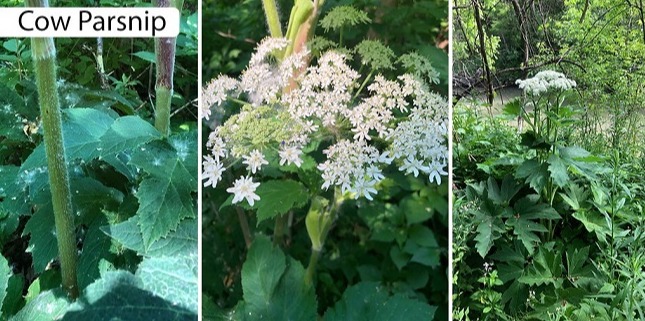Plants to Avoid
Wild parsnip
Wild parsnip blooms from June to October with yellow flowers, as pictured above and below. The plant grows along the edges of most roads, parks and open space areas. Please be aware that the sap from wild parsnip can cause a very painful rash. Avoid touching the plant. Please do not encourage children to pick the flowers. If you are exposed to the plant, wash the contacted area with soap and water as soon as possible.

Cow parsnip
Cow parsnip is a native plant with white round flower clusters that bloom from June to July. The leaves are similar to a maple leaf or an open palm with three fingers outstretched. This plant also grows in open space areas and along streams. The plant sap can cause a very painful rash. Avoid touching the plant.

Giant hogweed
Giant hogweed is a carrot family member that was brought over from southwest Asia as a garden ornamental. This plant has become a concern as the clear watery sap contains toxins that can cause severe dermatitis (skin inflammation ). You can get severe burns if you get the sap on your skin and the skin is then exposed to sunlight. Other symptoms may include painful blisters and purplish scars that may form and last for many years. Coming in contact with cow parsnip and wild parsnip can cause similar reactions.
The City of Oshawa does not currently have any giant hogweed on its property. However, the City does have cow parsnip and wild parsnip and wild parsnip, which look a lot like giant hogweed.
Common garden plants
Some common garden plants can have an invasive nature. Review the Ontario Invasive Plant Council’s Grow Me Instead p.d.f. to discover great alternatives to beautify your property.

